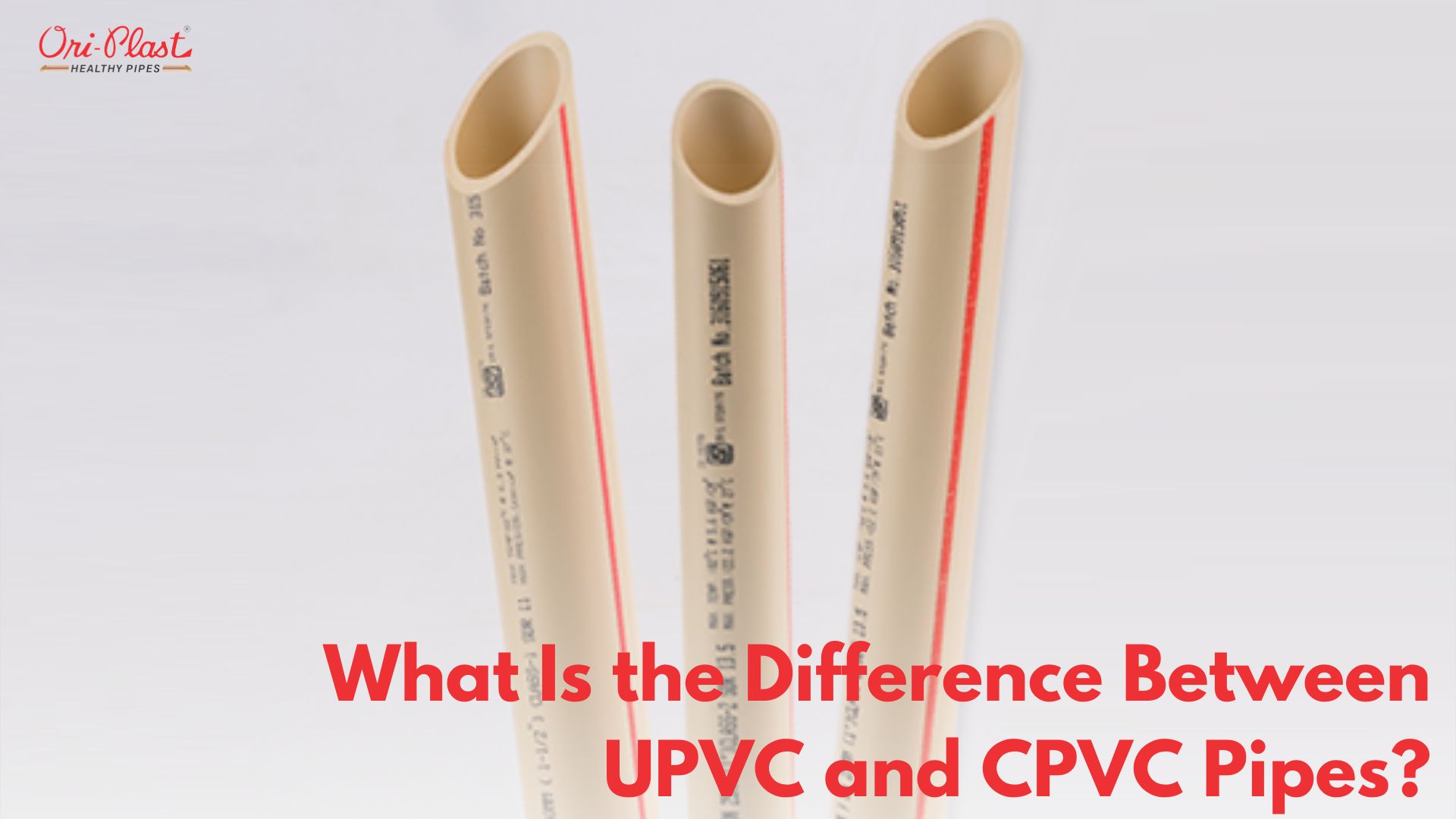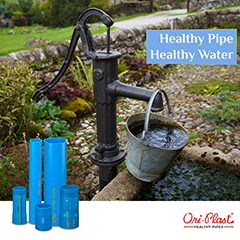uPVC and PVC are two types of thermoplastics that are widely used in construction and manufacturing industries. PVC, also known as polyvinyl chloride, is a synthetic plastic polymer that has been in use since the 1920s.
It is a versatile material that can be used to produce a wide range of products, including pipes, flooring, roofing, cables, and electrical wires.
uPVC, or unplasticized polyvinyl chloride, is a variant of PVC that is made without the addition of plasticizers, making it a more rigid and durable material. It is commonly used in the construction industry for windows, doors, and pipes.
Understanding the differences between uPVC and PVC is important for anyone involved in the construction and manufacturing industries.
These two materials have distinct properties that make them suitable for different applications. For example, while PVC is more flexible and easy to work with, uPVC is more rigid and has better resistance to weathering and chemicals.
By understanding these differences, manufacturers and builders can choose the right material for their specific needs and ensure that their products and structures are safe, durable, and sustainable.
uPVC and PVC Pipes
What is PVC?
PVC, or polyvinyl chloride, is a synthetic plastic polymer that is made from vinyl chloride monomer.
It is a highly versatile material that can be produced in a range of colors and textures and is widely used in various industries such as construction, healthcare, automotive, and packaging.
PVC has a number of unique properties that make it suitable for different applications. It is lightweight, strong, and durable, and has good resistance to abrasion, moisture, and chemicals. It is also flame-retardant and has good electrical insulation properties.
PVC can be produced in both rigid and flexible forms, depending on the amount of plasticizers added during the manufacturing process.
The chemical composition of PVC plays a crucial role in determining its properties. The addition of plasticizers to the polymer chain increases its flexibility and improves its ability to withstand stress and deformation.
The amount and type of plasticizers used can also affect the material's resistance to heat, cold, and chemicals.
PVC has a wide range of applications in everyday life. Some common examples of PVC products include pipes and fittings for plumbing and drainage, vinyl flooring and wall coverings, electrical cables and wires, medical tubing and devices, and food packaging.
PVC is also used in inflatable structures, such as pool toys and air mattresses.
What is UPVC?
uPVC, or unplasticized polyvinyl chloride, is a type of PVC that is made without the addition of plasticizers. As a result, it is a more rigid and durable material than traditional PVC.
uPVC is commonly used in the construction industry for applications such as windows, doors, and pipes.
The chemical composition of uPVC is similar to that of PVC, but the absence of plasticizers makes it more rigid and less flexible.
This property also gives uPVC better resistance to weathering and chemicals, making it more suitable for outdoor applications. uPVC is also more resistant to impact and scratches than traditional PVC.
uPVC has a variety of applications in everyday life. Some common examples of uPVC products include windows and doors, which are popular for their energy efficiency and durability.
uPVC pipes and fittings are also used for plumbing and drainage systems due to their resistance to corrosion and high pressure.
uPVC is also used in the electrical and automotive industries for cable insulation, and in the medical industry for tubing and other medical devices.
The properties of uPVC make it an ideal choice for applications that require strength, durability, and resistance to weather and chemicals.
It is also a sustainable choice, as it can be recycled and reused in a variety of applications. In recent years, there has been a growing interest in using uPVC as a sustainable alternative to traditional building materials, such as wood and steel, due to its low maintenance requirements and long lifespan.
Differences between PVC and uPVC pipes
When it comes to pipes, both PVC and uPVC are widely used in plumbing and drainage systems. However, there are some key differences between these two materials in terms of their properties and performance.
Physical properties:
PVC is a more flexible material than uPVC, which makes it easier to work with and install. However, uPVC is more rigid and has better resistance to impact and scratches, making it more durable and suitable for use in harsh environments.
uPVC is also more resistant to temperature fluctuations and can withstand higher pressures than PVC.
Chemical properties:
Both PVC and uPVC are resistant to most chemicals, but uPVC has better resistance to weathering and UV radiation, making it more suitable for outdoor applications. uPVC is also flame-retardant, while PVC is not.
Environmental impact:
PVC has been criticized for its potential environmental impact, as the production and disposal of PVC can release harmful chemicals into the environment.
However, efforts are being made to develop more sustainable alternatives to PVC, such as recycled PVC and bioplastics.
uPVC, on the other hand, is a more sustainable choice, as it can be recycled and reused in a variety of applications.
In terms of cost, PVC is generally less expensive than uPVC due to its lower manufacturing costs. However, uPVC is more durable and has a longer lifespan, which can result in cost savings in the long run.
When selecting pipes for a plumbing or drainage system, it is important to consider the specific requirements of the application and choose the material that best meets those needs.
Factors such as temperature, pressure, and exposure to weather and chemicals should be taken into account when choosing between PVC and uPVC pipes.
PVC and uPVC pipes are used in a variety of applications across different industries. Here are some examples:
PVC pipe applications:
- Plumbing and drainage systems: PVC pipes are widely used in residential and commercial plumbing systems due to their ease of installation, low cost, and resistance to corrosion.
- Irrigation systems: PVC pipes are commonly used for irrigation systems due to their flexibility, durability, and resistance to UV radiation and chemicals.
- Electrical conduit: PVC pipes are used in electrical conduit systems due to their high electrical insulation properties and resistance to fire.
uPVC pipe applications:
- Water supply systems: uPVC pipes are commonly used for water supply systems due to their high durability, resistance to corrosion, and low maintenance requirements.
- Industrial piping: uPVC pipes are used in industrial piping applications due to their resistance to chemicals, abrasion, and high pressure.
- Sewage systems: uPVC pipes are widely used in sewage systems due to their resistance to chemical corrosion and high durability.
PVC pipes are a cost-effective and versatile option for many applications. However, they have limitations in terms of their durability and resistance to chemicals and weathering.
uPVC pipes, on the other hand, are more durable and have better resistance to chemicals and weathering, but they are generally more expensive than PVC pipes.
Industries:
PVC pipes are commonly used in residential and commercial plumbing, irrigation, and electrical conduit systems. uPVC pipes are often used in industrial piping, water supply, and sewage systems.
Both materials are also used in the construction industry for applications such as windows, doors, and roofing.
Overall, the choice between PVC and uPVC pipes depends on the specific requirements of the application.
While PVC pipes are a more cost-effective option for many applications, uPVC pipes are more durable and have better resistance to chemicals and weathering.
In conclusion, PVC and uPVC are two common materials used in construction and manufacturing, with distinct differences in their properties and applications.
PVC is a more flexible and cost-effective option, while uPVC is more durable and resistant to chemicals and weathering.
It is important to understand the specific requirements of an application in order to choose the appropriate material.
Furthermore, the future of PVC and uPVC lies in sustainable manufacturing and construction practices.
Efforts are being made to develop more sustainable alternatives to PVC, such as recycled PVC and bioplastics. uPVC, on the other hand, is a more sustainable choice due to its ability to be recycled and reused in a variety of applications.
In order to promote sustainable practices, it is important to continue researching and developing new materials that are environmentally friendly and efficient.
By understanding the differences between PVC and uPVC, we can make informed decisions and contribute to a more sustainable future in the manufacturing and construction industries.
If you are looking for some great quality PVC pipes, you can check out Oriplast pipes Continue Reading... https://oriplast.com/buy-quality-upvc-plumbing-pipes-and-fittings-from-ori-plast/ https://oriplast.com/types-and-usage-of-ori-plast-pvc-and-upvc-pipes/ Check Out Oriplast Facebook Page For More Fun Content Like This...



